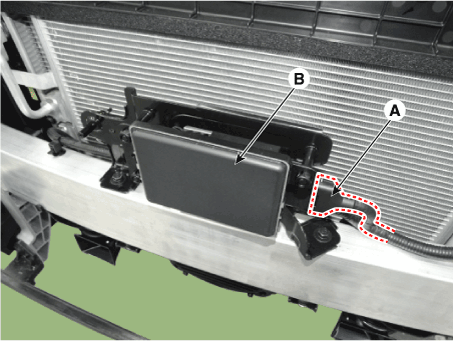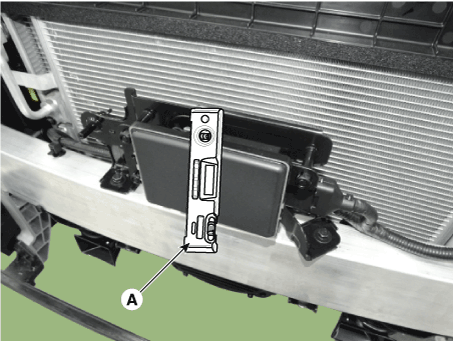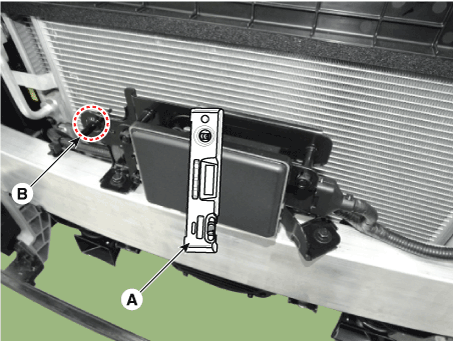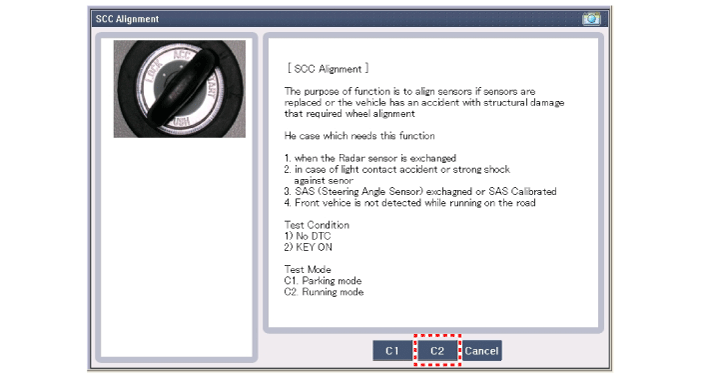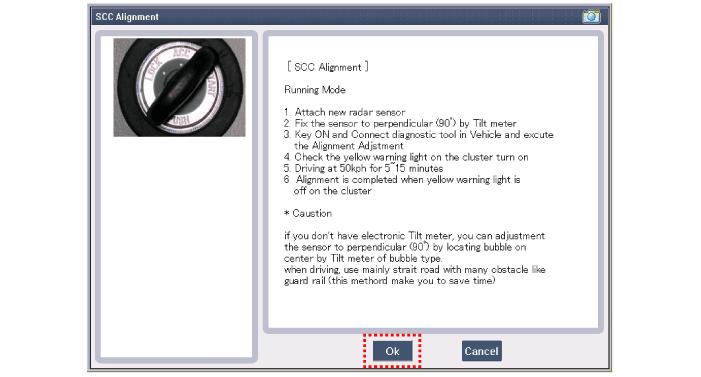Hyundai Ioniq: Front Radar System / Front Radar Unit. Repair procedures
Hyundai Ioniq (AE) 2017-2025 Service Manual / Advanced Driver Assistance System (ADAS) / Front Radar System / Front Radar Unit. Repair procedures
| Removal |
| 1. | Remove the front bumper. (Refer to Body - "Front Bumper") |
| 2. | Disconnect the smart cruise control unit connector (A). |
| 3. | Remove the smart cruise control nuit assembly (B) from thevehicle after loosening mounting bolts.
|
| Installation |
| 1. | Install in the reverse order of removal. |
|
| 2. | Align the smart cruise control sensor. (Refer to "Smart Cruise Control Sensor Alignment") |
| 3. | Install the bumper cover. (Refer to Body - "Front Bumper Cover") |
| Smart Cruise Control (SCC) Sensor Alignment |
The objective of the alignment is to ensure correct SCC performance. In order for the sensor to perform properly, the sensor must be aligned precisely. The sensor alignment has major impact on road estimation, lane prediction, and target processing. When the sensor is misaligned, the performance of SCC cannot be guaranteed. Therefore, if the sensor needs to be reinstalled or a new sensor to be installed on a vehicle, the sensor shall be aligned by service personnel.
The sensor must be aligned when ;
|
The sensor can not recognize a vehicle ahead.
|
Radar sensor should be aligned in vertical and horizontal direction. Vertical alignment should be performed using level/tilt meter and horizontal alignment should be performed by driving on a road.
| 1. | To maintain the horizontal condition between a vehicle and ground, park a vehicle on a lift or level ground. |
| 2. | Remove the bumper cover. (Refer to Body - "Front Bumper Cover") |
| 3. | Check out the vertical alignment of sensor using a level/tilt meter (A). (Tolerance : 0° ± 0.4° less) If verticality of the sensor is out of the tolerance, turn the adjustment screw (B) to adjust it within the tolerance.
|
| 4. | Install the bumper cover. (Refer to Body - "Front Bumper Cover") |
| 5. | To perform the horizontal sensor alignment, connect GDS after starting the engine and choose "SCC Alignment"
|
| 6. | Select "Driving Mode" to start sensor alignment.
|
| 7. | Drive the vehicle after the alignment is initiated on the GDS. Check the red light of instrument cluster is on.
|
| 8. | After the sensor alignment is completed, the instrument cluster warning light goes off.
|
Other information:
Hyundai Ioniq (AE) 2017-2025 Owner's Manual: How to Connect Portable Charger (ICCB: In-Cable Control Box)
1. Connect the plug to a household electric outlet. 2. Check if the power lamp (green) illuminates on the control box. 3. Depress the brake pedal and apply the parking brake. 4. Turn OFF all switches, shift to P (Park), and turn OFF the vehicle. 5...
Hyundai Ioniq (AE) 2017-2025 Owner's Manual: Wiper Blades
Blade Inspection Contamination of either the windshield or the wiper blades with foreign matter can reduce the effectiveness of the windshield wiper functionality. Common sources of contamination are insects, tree sap, and hot wax treatments used by some commercial car washes...
Categories
- Manuals Home
- 1st Generation Ioniq Owners Manual
- 1st Generation Ioniq Service Manual
- Auto Door Lock/Unlock Features
- If the 12 Volt Battery is Discharged (Hybrid Vehicle)
- Child-Protector Rear Door Locks
- New on site
- Most important about car
Rear Seats
Folding the rear seat
The rear seatbacks can be folded to facilitate carrying long items or to increase the luggage capacity of the vehicle.
WARNING
Never allow passengers to sit on top of the folded down seatback while the vehicle is moving. This is not a proper seating position and no seat belts are available for use. This could result in serious injury or death in case of an accident or sudden stop. Objects carried on the folded down seatback should not extend higher than the top of the front seatbacks. This could allow cargo to slide forward and cause injury or damage during sudden stops.
Copyright © 2025 www.hioniqae.com

